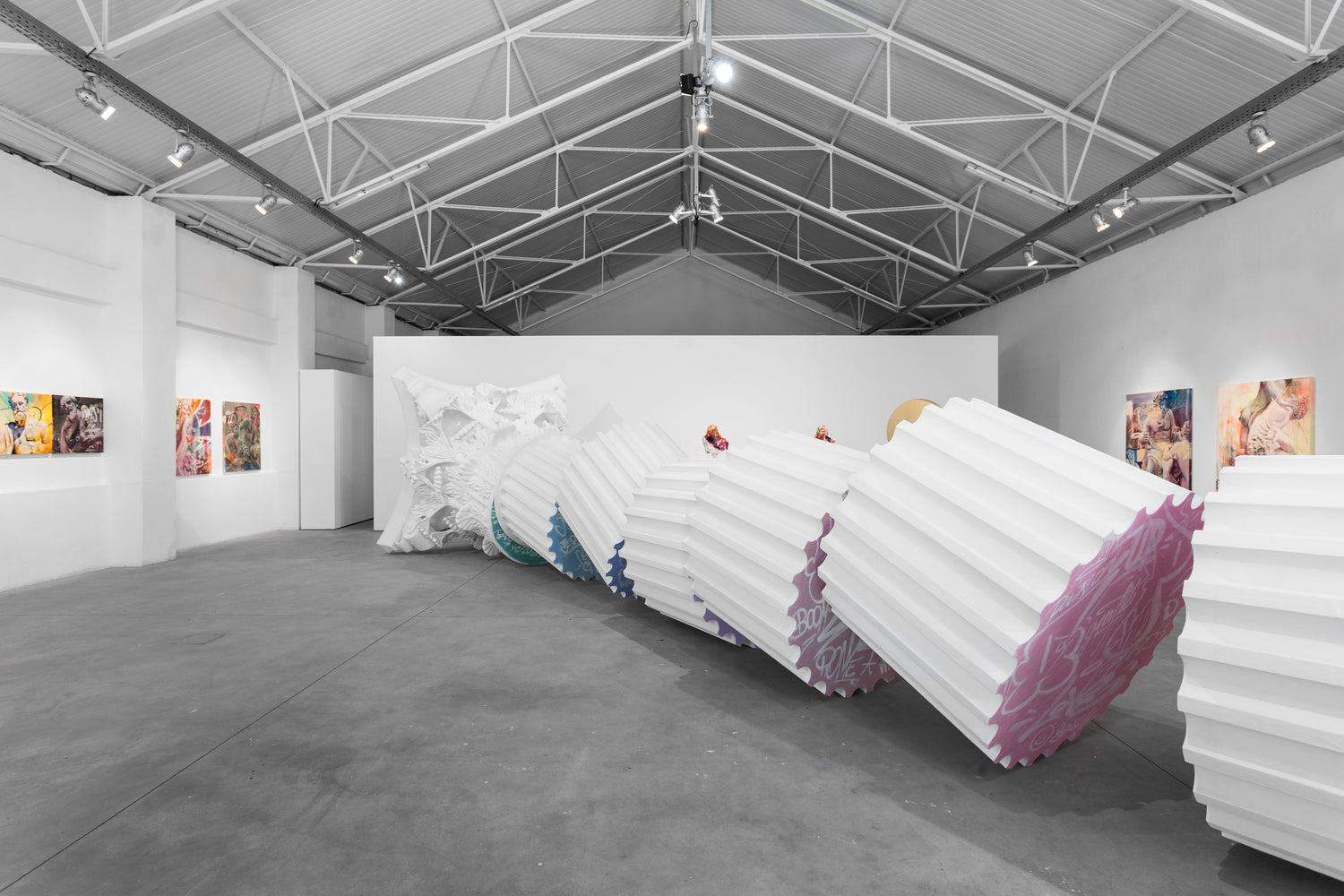Cultural Guide in Lisbon: Museums, Galleries, and Theaters
Lisbon, the sun-kissed capital of Portugal, invites you to embark on a cultural odyssey through its rich history and vibrant arts scene. From ancient monasteries to contemporary galleries, the city boasts an array of cultural treasures waiting to be discovered. In this guide, we delve deeper into the diverse cultural activities in Lisbon, highlighting more museums, galleries, permanent exhibitions, and historical landmarks, and even suggesting a few theaters that contribute to the multifaceted charm of this enchanting city.
Museums:
1. Museu Nacional do Azulejo (National Tile Museum):
Tucked away in an ancient convent, this museum is a celebration of Portugal’s iconic azulejos – meticulously crafted ceramic tiles. Spanning from the 15th century to contemporary works, the collection offers a visual journey through the evolution of this unique art form.
2. Museu Nacional de Arte Antiga (National Museum of Ancient Art):

Housed in a 17th-century palace, this museum boasts an extensive collection of European art, including paintings, sculptures, and decorative arts. Visitors can marvel at masterpieces from renowned artists like Hieronymus Bosch and Albrecht Dürer. Images rights from visitportugal.com.
3. MAC – Contemporary Art Museum (CCB – Berardo Collection Museum):

Nestled in the cultural hub of Belém, this contemporary art museum showcases an impressive collection of works from the 20th and 21st centuries. Pieces by Picasso, Warhol, and Dalí are among the highlights, making it a must-visit for art enthusiasts. The Museum receives in deposit works from the State Contemporary Art Collection (CACE), the Teixeira de Freitas Collection, the Ellipse Collection, and the Berardo Collection. Images rights from portugalconfidential.com.
4. Museu Nacional de História Natural e da Ciência (National Museum of Natural History and Science):
Located in the historic University of Lisbon, this museum takes visitors on a journey through natural history, featuring exhibitions on geology, zoology, and anthropology. The museum’s botanical garden is a serene oasis in the heart of the city.
5. Museu do Oriente (Museum of the Orient):
Exploring Portugal’s historic ties with the East, this museum in Alcântara showcases a captivating collection of Asian art and artifacts. From Chinese porcelain to Japanese prints, the museum offers a unique perspective on the cultural exchange between Portugal and the Orient.
6. MAAT – Museum of Art, Architecture, and Technology:

Along the Tagus River, MAAT stands as a symbol of modernity in Lisbon. The museum’s rotating exhibitions focus on the intersection of art, architecture, and technology, offering an exciting destination for those intrigued by cutting-edge creativity. Images rights from archdaily.com.br.
Other galleries & exhibitions:
1. Lisbon’s Gallery District – Chiado and Bairro Alto:
Stroll through the cobblestone streets of Chiado and Bairro Alto to discover a myriad of art galleries. These neighborhoods serve as a vibrant canvas for contemporary and traditional art spaces, providing a platform for both emerging and established Portuguese artists.
2. LX Factory:
A creative hub set in a former industrial complex, LX Factory is a haven for artists and art lovers alike. Boasting art studios, design shops, and galleries, this dynamic space encapsulates Lisbon’s contemporary art scene amidst a backdrop of industrial architecture.
3. Fundação Calouste Gulbenkian:
This cultural complex encompasses a museum, an art library, and a concert hall, making it a holistic experience for art and culture enthusiasts. The museum features an extensive collection of European and Asian art, including paintings, sculptures, and decorative arts.
4. Casa-Museu Amália Rodrigues (Amália Rodrigues House-Museum):
Devoted to Portugal’s beloved fado singer Amália Rodrigues, this museum in the historic neighborhood of Mouraria preserves the artist’s personal belongings and provides insights into the cultural phenomenon of fado music.
5. Underdogs Gallery:

For a taste of contemporary urban art, visit Underdogs Gallery in the Marvila neighborhood. This gallery showcases street art, illustration, and other alternative forms of expression, often featuring both Portuguese and international artists. Images rights from www.under-dogs.net featuring an old exhibition.
6. Oceanário de Lisboa (Lisbon Oceanarium):
Located in the Parque das Nações, the Lisbon Oceanarium is one of the largest indoor aquariums in the world. With a stunning design resembling an aircraft carrier, it houses diverse marine ecosystems, providing a fascinating underwater experience for visitors of all ages.
Historical Landmarks:
1. Torre de Belém (Belém Tower):
A UNESCO World Heritage site, Belém Tower is a 16th-century fortress that once guarded the entrance to Lisbon’s harbor. Its Manueline architecture and maritime history make it an essential stop for history enthusiasts.
2. Mosteiro dos Jerónimos (Jerónimos Monastery):
Another UNESCO gem, the Jerónimos Monastery is a masterpiece of Manueline architecture. Built to commemorate Vasco da Gama’s voyage, the monastery’s cloisters and intricate details tell the story of Portugal’s Age of Discovery.
3. Castelo de São Jorge (São Jorge Castle):
Perched atop one of Lisbon’s seven hills, São Jorge Castle offers panoramic views of the city. The castle’s history dates back to Roman times, and its medieval architecture and archaeological sites provide a captivating journey through Lisbon’s past.
4. Palácio Nacional da Ajuda (Ajuda National Palace):
This neoclassical palace showcases the opulence of the 19th-century Portuguese monarchy. Visitors can explore lavish rooms adorned with period furniture, art, and artifacts, providing a glimpse into the royal lifestyle.
5. Aqueduto das Águas Livres:
A marvel of 18th-century engineering, this aqueduct spans across the city and offers a fascinating glimpse into Lisbon’s historical water supply system. Visitors can walk along the aqueduct and enjoy panoramic views of the city.
Some theatrical delights:
Teatro Nacional D. Maria II (National Theatre D. Maria II):
Located in the heart of Rossio Square, this neoclassical theater has been a cultural icon since the 19th century. Hosting a range of performances from classic plays to contemporary productions, it provides a delightful theatrical experience.
Teatro do Bairro:
Situated in the eclectic Bairro Alto district, this intimate theater focuses on experimental and contemporary performances. It’s a hub for innovative plays, dance performances, and cultural events, attracting a diverse audience.
Teatro Trindade:
With a history dating back to the 19th century, Teatro Trindade is one of Lisbon’s oldest theaters. Renovated and reopened, it hosts a variety of shows, including plays, concerts, and stand-up comedy, catering to diverse artistic tastes.
Lisbon’s cultural landscape is an intricate mosaic of tradition and modernity, inviting visitors to explore its museums, galleries, historical landmarks, and theaters. Whether immersed in the artistry of azulejos, admiring contemporary masterpieces, or experiencing the dramatic flair of live performances, Lisbon offers a diverse and captivating cultural tapestry for every explorer.

For tailor-made tours or other programs, please get in touch with us through the telephone below or by filling out the form.

